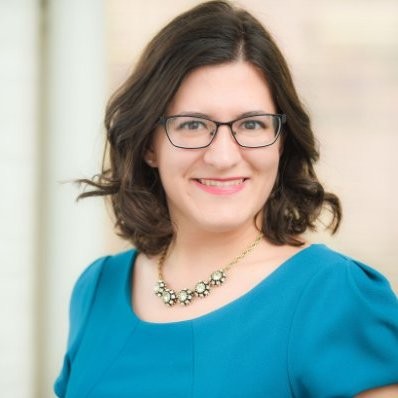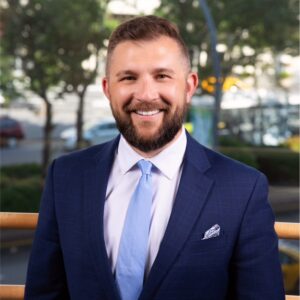The dental dilemma of natural teeth
More seniors than ever before still have their own teeth, and that’s putting their health at risk.
In 1965, half of adults age 65 and older had no natural teeth. Today, about 75 percent of adults age 65 and older have most of their natural teeth.
The dramatic change is thanks to a lifetime of regular checkups, education on proper cleaning and appointment reminders from the dentist. The dental industry’s preventative initiatives have worked, as millions of healthy adults are more likely to see their dentist in a 12-month period than their primary care physician.
"The population that’s aging today is very different from the aging population back in the ’60s and even in the ’70s, and a lot of it has to do with the fact that they have teeth," says Jed Jacobson, DDS, MS, MPH, Chief Science Officer and Senior Vice President of Professional Services for Delta Dental of Michigan, Ohio, Indiana and North Carolina. "Now, given the fact that they have teeth, it creates a whole series of other problems."
Most Americans obtain dental insurance through their employer. When they retire, they often lose their dental insurance. Medicare has no provisions for preventative dental care or routine dental procedures and only provides limited service deemed medically necessary for inpatient hospital services. Fewer than 20 percent of adults age 75 and older have private dental insurance, according to the Centers for Disease Control and Prevention. And seniors without dental insurance are less likely to go to the dentist, according to the National Association of Dental Plans. They’re also more likely to have heart disease, osteoporosis and diabetes.
Oral health affects overall health
Because seniors have their teeth, they also have a chance of developing oral infections. Forty-seven percent of adults age 30 and older have some form of periodontitis, a gum infection that damages the soft tissue and destroys the bone that supports teeth.
The infection is caused by plaque, one of what Jacobson calls the “dirty dozen,” a handful of harmful oral bacteria that form a biofilm—a thick, sticky substance that allows bacteria to stick to teeth, cheeks and palate.
"Those oral bacteria not only cause problems locally like tooth decay and periodontal disease, but those same bacteria can get into the bloodstream and go to other parts of the body," Jacobson says. "Oral health matters outside of the oral cavity."
In an extreme example the California Department of Public Health ruled a 76-year-old woman who required total assistance with activities of daily living, including oral hygiene, died from a dental abscess that led to cardiopulmonary arrest. The agency found the nursing home failed to provide routine dental services to ensure oral health and was issued the highest fine possible under state law, $100,000. The state also issued the facility a Class AA violation for what is "determined to have been a direct proximate cause of death of a patient or resident of a long-term care facility."
Not ripped from the headlines but no less attention-grabbing is the risk of bacterial endocarditis, where oral bacteria travels to the bloodstream and into the heart. The infection can lead to an average of six weeks in the hospital with a 20 percent chance of mortality and 10-20 percent chance of requiring prosthetic heart valves. The cost: $150,978.
Plaque can also travel to ear implants, breast implants and hip and knee replacements. Replacement parts and prosthetics are highly polished, inviting surfaces for bacteria to grow. The average direct medical costs of a late prosthetic joint infection in 2014 was $238,364. The average length of stay in the hospital was 100 days.
Or, in some cases, when people inhale, they suck in bacteria into their lungs. Periodontal disease increases the risk of aspiration pneumonia by four times with a median treatment cost of $14,000.
Complications to chronic conditions
Infections aside, seniors are naturally at risk for xerostomia, decreased saliva production. Nearly 30 percent of people age 65 and older have dry mouth. There are 400 commonly used drugs that can cause xerostomia as a side effect, including antihistamines, diuretics, antidepressants and anti-angina. That’s problematic because the saliva has antibacterial properties. “When you reduce the salivary flow, you’re going to have a greater risk of getting tooth decay or periodontal disease because you don’t have the protective characteristics and elements in the saliva,” Jacobson says.
Oral health can affect chronic diseases, too. Research has found periodontal disease can make it difficult for people with diabetes to manage their blood glucose levels. But regular cleanings can help. Preliminary study results found diabetics who have their teeth cleaned professionally four times a year can better manage their levels.
The results are staggering. Every one-point reduction in glycated hemoglobin levels reduces the risk of diabetic complications of the eye, kidney and nerve disease by 40 percent; diabetes related deaths by 21 percent; heart attacks by 14 percent; $700-$1,000 less in healthcare costs; and one fewer visit to the primary care giver.
General cleaning challenges
"One of the problems of the senior population, particularly those with arthritis or maladies, is it becomes difficult for them to perform oral hygiene procedures," Jacobson says.
That can put seniors at increased risk of periodontitis because they can’t brush and floss as well. What’s more, that risk level is not equal. Some people are more predisposed based on their lifestyle habits such as smoking, chronic diseases like diabetes or genetic makeup.
Dentists check for tooth decay and periodontitis as well as spot signs and symptoms of 120 different diseases in the mouth. Given the health risks associated with poor oral health, that annual visit seems like a no-brainer. It may be, but it’s not always easy. Many long-term care facilities don’t have dentists on staff or equipment in the facilities.
"To get residents their dental care, you either have to take them out of the nursing home or you need to bring a dentist or dental hygienist into the nursing home and both of those are not easy," Jacobson says.
But the biggest challenge to maintaining oral health for all Americans is cost, according to the National Health and Nutrition Examination Survey. That’s especially true for seniors who must purchase private dental insurance or pay out of pocket.
"We know that dental insurance is fundamental in getting people to go and see their dentist," Jacobson says. "I’m concerned because they do have teeth, and we need to preserve them and protect them. It is important from cradle to grave, from womb to tomb, that you maintain good oral health. Aging with vitality starts and ends in the mouth."

Nicole was Senior Editor at I Advance Senior Care and Long Term Living Magazine 2015-2017. She has a Journalism degree from Kent State University and is finalizing a master’s degree in Information Architecture and Management. She has extensive studies in the digital user experience and in branding online media. She has worked as an editor and writer for various B2B publications, including Business Finance.
Related Articles
Topics: Articles , Clinical











